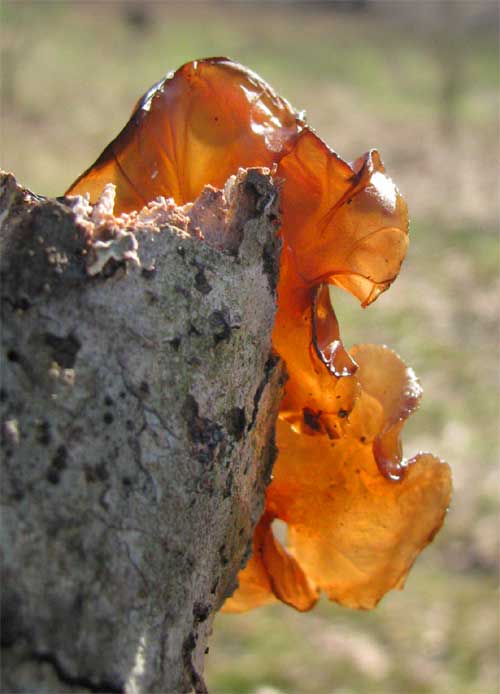Excerpts from Jim Conrad's
Naturalist Newsletter
from the February 23, 2009 Newsletter, issued from the forest near Natchez, Mississippi; elevation ~400ft (120m), ~N31.47°, ~W91.29°:
JELLY FUNGI EMERGING
Last week a cold front came through dumping two or three inches of rain. This week, just as they're supposed to, jelly fungi appeared, such as the one shown below:

That honey-colored, rubbery little mass about twice the size of a thumbnail arises from a twig fallen from a tree. When I say it's a jelly fungus I'm not saying much, for many jelly fungus species exist, spread through several ORDERS. To grasp what that means, remember that among birds there's the penguin order, the woodpecker order, the parrot order, etc. Saying that jelly fungi occur in several orders implies big differences among the many jelly-fungus types.
I'm guessing that what's shown in my picture is one of the "ear fungi," maybe genus Auricularia. Even experts have trouble figuring out species in this group, especially because they change color, texture and form depending on age, humidity and other factors.
That doesn't deter the pragmatic Chinese from using certain jelly fungus species in their egg roles and other dishes, however. In fact, most jelly fungi appear to be edible, though they're rather tasteless. If you were with me during my Querétaro time you may remember the day I met a lady picking them in the uplands. I've read that American pioneers used to dip jelly fungi in syrup, then dry them in the sun to nibble on during the winter as sweets.
Though jelly fungi don't produce distinct gills, they do reproduce with spores.